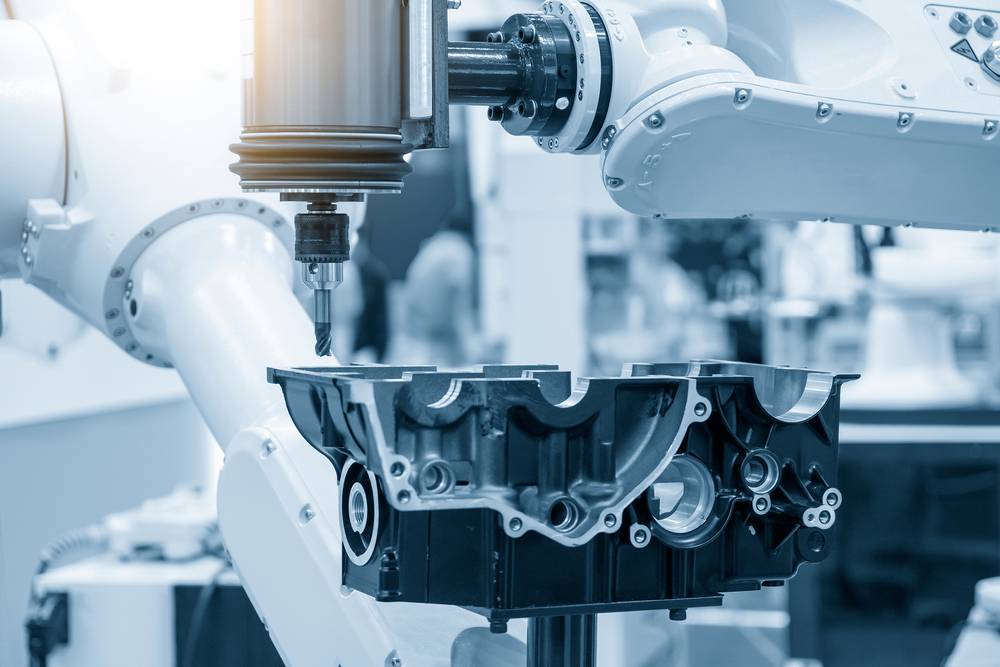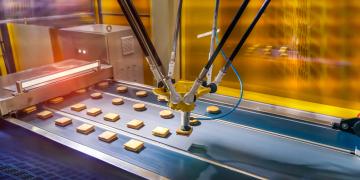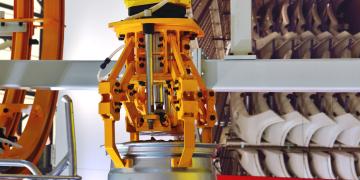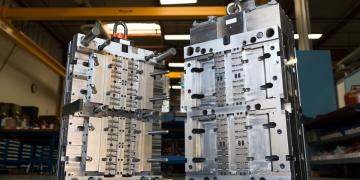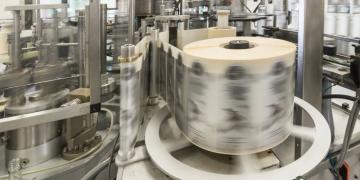Robotic milling offers manufacturers flexibility in a space traditionally dominated by large capital equipment. In addition, this technology provides new options for modern manufacturing. From creating intricate molds for the plastics industry to beautiful works of art, the possibilities afforded by robotic milling open new doors for manufacturers and can increase the productivity of the milling process. This article covers the basics of milling robots, compares this technology to traditional options in the industry, and discusses when you should consider purchasing a milling robot.
Basics of Robotic Milling
While milling has existed for decades, applying industrial robots to this task is a relatively new occurrence in the mainstream. The barriers to entry for robots to enter the milling space lowered significantly with the prevalence of 3D slicing software. CAD/CAM software for robots introduced simulation, verification, and toolpath coordination for the milling process. This made it easier to translate 3D designs into code for the robot to follow. In addition to the software component, the essential components required for milling include:
- Robot hardware
- Machine tooling and spindle
- Workpiece jig
- Safety guarding
Types of Robots
Six-axis variants typically perform robotic milling applications. Six-axis robots have significant advantages for the milling process. First, their articulate movement allows them to create intricate shapes and designs into the workpiece naturally. Similar results from other equipment require complex supporting equipment or manual adjustments by the operator. These robots also boast a balance of reach and strength. This combination is needed to work around larger workpieces and handle the heavy machine tooling equipment. Example applications include:
- Milling complex molds used in the hot plastic injection process
- Machining boat interior frames
- Large pipe finishing
- Medical device castings
- Carbon fiber finishing
The SCARA robot isn’t nearly as common as the six-axis for milling. However, it still deserves mention here. These small units are great for small, simple, and low-cost robotic milling applications. However, they don’t feature the dexterity and reach of their six-axis cousins. This means they won’t be a good fit for your larger and more complex applications. However, SCARA robots are a great low-cost option for the right task. Example applications include:
- Woodworking
- Metal gaskets for automotive
- Simple plastic components
Industries
Milling robots are present across many industries due to their ease of use and low cost compared to traditional capital equipment. These robots are helpful for most milling tasks. Common industries for robotic milling include:
- Wood Manufacturing
- Plastics & Carbon Fiber
- Metals
- Medical Device
- Nautical Manufacturing
- Art and Architecture
- Aerospace
- Automotive
Robotic Milling vs. CNC Machining
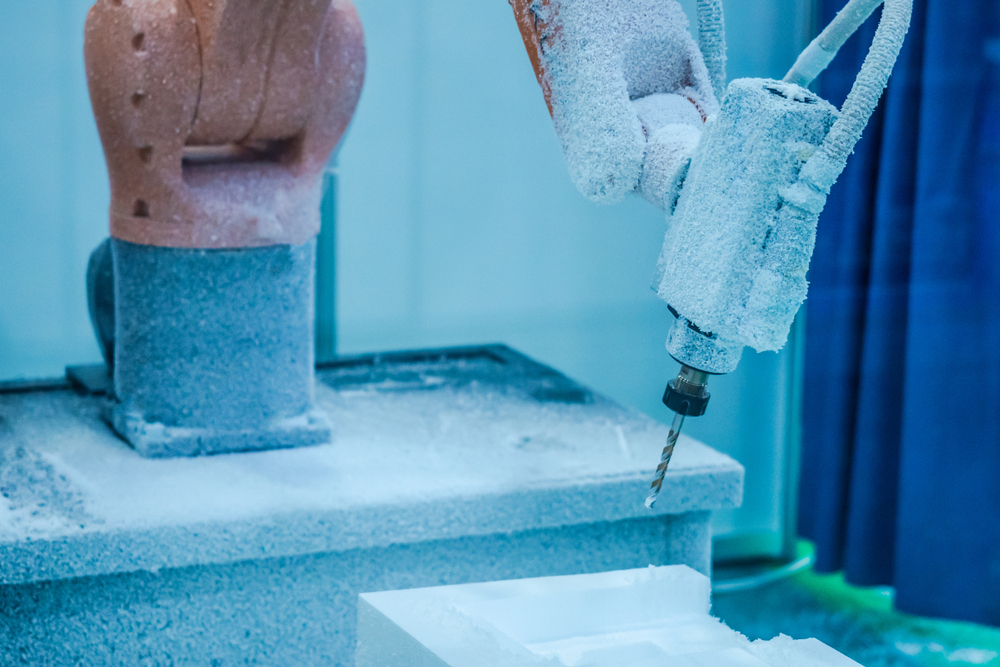
There are plenty of reasons to automate your milling process. Automation offers greater throughput, better quality parts, and more consistent production. Comparing robotic and CNC solutions are a common dilemma for manufacturers.
Milling robots compete with CNC machines for milling tasks. Both units are excellent choices for milling tasks. However, the optimal choice is often dependent upon the application and the context of its use at your facility. For example, high-end machining of transmissions has different requirements from milling complex foam products. Can you guess which one is better suited for CNC machines vs. a milling robot?
Let’s discuss the differences between the two, so you can understand when to consider one over the other.
Cost
The most significant advantage to manufacturers of milling robots is their lower cost compared to CNC machines. Depending on the application, robots can be roughly 30-70% of the cost of a CNC machine. It’s common for quality CNC machines to carry a sticker price in excess of $200,000 USD. A conservative estimate for a medium-sized milling robot after integration can range from $60,000 - $120,000 USD. There can be a wide variance due to the particulars of individual applications. Bottom line: a robot can provide a more cost-efficient option when budgets are leaner, and profit margins are narrow.
Flexibility
The flexibility inherent to robots is an essential feature for most applications. CNC machines are often purpose-built for a small number of specific applications. Robots can be redeployed for many different tasks. For example, robots can be easily moved from a small milling task to a large one. CNC machines are restricted in size by their construction. Robots can also be redeployed to other tasks entirely if needed. For example, nothing stops you from redeploying your robot to a palletizing operation if your needs change in the future. CNC machines, however, will always be CNC machines.
Precision
CNC machines offer best-in-class precision due to their rigid construction. While milling robots offer sub-millimeter precision, CNC machines easily achieve sub-micron performance levels. Depending on your task, it may not be feasible to use a milling robot for this reason. Milling for high-end aerospace components often demands the strictest tolerances in manufacturing. Sometimes there is no real choice between CNC and robotics here. Other times, components with more lax tolerances offer an opportunity to use milling robots. Consider your application’s demands carefully when choosing between a CNC and a robot.
How to Integrate a Milling Robot

Integrating a milling robot can be challenging without knowing the requirements. Making mistakes during integration leads to headaches throughout the lifecycle of the machine. For example, selecting the wrong type of robot can lead to significant reductions in the productivity of your application. The following are the major steps to consider when integrating your robot:
Find a Supplier
Finding the right supplier for your project is a critical step on your automation journey. The supplier can significantly impact your project’s cost and ease of integration. Ideally, you will find multiple suppliers experienced in deploying robots in milling applications. This provides you flexibility in weighing brand strengths and costs against one another, allowing you to make an informed decision for your company.
So how do you find experienced suppliers, local to you, and who are experts in your industry? HowToRobot is here to help. We maintain a network of over 16,000 suppliers to make your search as quick and easy as possible.
Select Required Software
Additional software for milling applications can be easily overlooked. This isn’t a standard requirement for many other applications, but in the case of a complex task such as milling, it is critical. This software allows you to translate your 3D models into milling commands for your robot as opposed to manually programming milling commands. Utilizing this software becomes faster by orders of magnitude. It’s essential to ensure the chosen software is compatible with your brand of robot. Want to learn more? Get in touch with a HowToRobot expert today.
Required Hardware
There are many hardware options available depending on the requirements of your project. We discussed some essential components earlier. However, you might need to source additional products to ensure your process is operating correctly. Other elements might include:
- Tool racks for part changing
- Coolant systems for milling harder materials
- Robotic transfer units for larger milling tasks.
Your supplier should be able to assist you in sourcing these additional components. Some suppliers will have all-inclusive packages, which are ready-made work cells for standard milling tasks. These packages will come with all the required hardware for your application. Purchasing a package like this can significantly impact the work needed to source the necessary components.
For most manufacturers, the question isn’t whether to automate but how to automate. Milling robots offer immense compounding value to your machining process. Robotics can be the optimal choice depending on the specifics of your application.
Are you ready to begin your automation journey with milling robots? We have tools to help. Tell us about your desired application and your business, and we will help you get started on a path towards automation. Click here to get started today.

